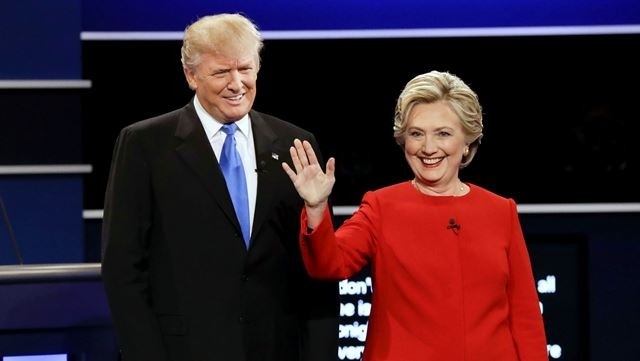To carry the nation into a new era, the winner must both handle unfinished work and confront new challenges.
It is abundantly clear that this year’s election has been quite unusual. For the first time in the American history, a woman—former Secretary of State Hillary Clinton of the Democratic Party—has won the nomination of a major party, and for the first time in more than 70 years, a political outsider with no experience serving in government—billionaire Donald Trump—has won the nomination of a major party.
The unorthodox nature of this year’s campaigns has made for many surprises, as reflected not only in the ups and downs of the polls, but also in the unprecedentedly high degree of attention they have drawn from the US public, as for the first time the number of registered voters has exceeded 200 million.
The Republican Party is divided as never before, with many of its adherents refusing to support their party’s nominee—Wall Street tycoon Trump.
The media has broken with tradition, abandoning its typical neutral point of view and openly favouring former First Lady Clinton.
These unusual phenomena have also drawn the attention of the world to the US’s 58th presidential election. Many abroad are watching the tight race for the White House closely, concerned about the future impact of US policies on other countries and regions.
The atmosphere in the US during this election year has been somewhat confused, making politicians more divided and voters more hesitant. There is talk of how, rather than being a matter of selecting a candidate with the ability to make a better America, the election has turned into something simpler—a matter merely of selecting a qualified leader for the White House.
The selection of the 45th President of the US comes after Barack Obama’s two-term presidency, which yielded some outstanding achievements. However, he will leave his successor with some unfinished work.
Regarding domestic issues, while the US economy has not been the highlight of this election, this does not mean economic troubles are now past tense. Eight years after the global economic crisis, the US economy has recovered, with low rates of inflation and unemployment, but this has still been the longest recovery period in the history of the world’s largest economy. Maintaining and promoting the recovery of economic growth is no easy task for the new US leader.
The 2016 US presidential election has laid bare the deep divisions between the two major parties, as well as in American society. No matter who takes the White House, this division will persist, as according to public opinion surveys, the support rate for the two leading candidates is around 50% each.
Problems like shootings and racially motivated violence will continue to pose challenges for the leader of the US in the coming term. Complex and long-term projects in healthcare, climate management, environmental affairs and immigration will also be left to the successor administration.
Challenges in the field of foreign affairs are no less serious. The restoration of diplomatic relations between the US and Cuba and the signing of an agreement on Iran’s nuclear programme have been marked down in the annals of history, but the process of the normalisation of US-Cuba ties cannot be completed until the US ends its unjustified sanctions against its southerly neighbour.
The nuclear deal with Iran is still faces obstacles posed by the US Congress and even from the two main presidential candidates, as the Democratic representative has vowed to review it and her Republican rival has threatened to reject it.
Obama’s plan of “pivoting to Asia,” which he has promoted for more than seven years, despite some moments of distraction, is now in danger of coming to a dead end. Will the project of turning the 21st Century into “America’s Pacific Century” become a reality when both presidential candidates have openly expressed their negative attitudes towards the Trans-Pacific Partnership (TPP) agreement, which was supported by the Obama administration as an effective tool for strengthening American influence in the region?
Meanwhile, the relationship between the US and its allies in many areas has declined. Even traditional allies and long-time friends in Europe, Asia and the Middle East are shifting their foreign policies to seek new partners, even turning their backs on America.
American efforts at intervention to address global crises and the war on terrorism and against the self-proclaimed Islamic State (IS) have not reached their objectives, and have even met with setbacks, pushing America into a tense relationship with some of its allies and key partners.
Amidst difficulties, balancing the USA’s relationship with Russia will be a key geopolitical challenge for the next president of the US. After a fairly quiet period of “relaunching” in the President Obama’s first term, US-Russia relations fell into a period of stress and are currently at their lowest since the Cold War.
The difficult task is how to narrow the differences between the two countries, especially in conflicts over efforts to create and operate a new world order, which have been revealed most clearly in the Syrian and Ukrainian crises.
The new leader of the USA will be chosen today, and no matter who takes the seat of power in 2017, he will have to face many challenges, including tackling uncompleted tasks left over from his predecessor’s administration.
















